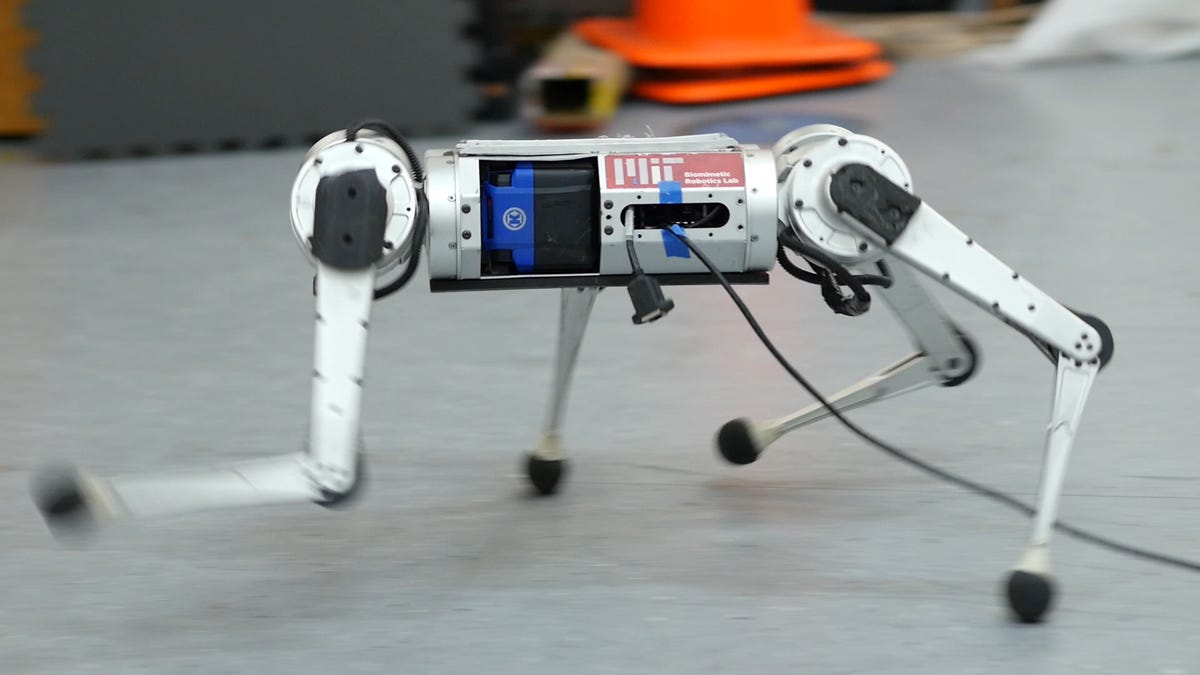
MIT
You can find a new edition of a pretty speedy quadrupedal robotic from MIT’s Pc Science and Synthetic Intelligence Laboratory (CSAIL). Even though 4-legged robots have garnered no stop of attention around the last few a long time, one astonishingly quotidian talent has been elusive for them: working.
Which is because operating in a genuine-world environment is phenomenally complicated. The fast rate leaves scant place for robots to encounter, get better from, and adapt to difficulties (e.g., slippery surfaces, physical hurdles, or uneven terrain). What is actually far more, the stresses of functioning force hardware to its torque and pressure limitations. MIT CSAIL PhD scholar Gabriel Margolis and Institute of AI and Fundamental Interactions (IAIFI) postdoc fellow Ge Yang a short while ago instructed MIT News:
In these situations, the robotic dynamics are really hard to analytically product. The robot needs to reply rapidly to improvements in the atmosphere, these kinds of as the instant it encounters ice whilst running on grass. If the robot is strolling, it is going little by little and the presence of snow is not usually an difficulty. Consider if you ended up walking gradually, but very carefully: you can traverse nearly any terrain. Today’s robots facial area an analogous problem. The dilemma is that moving on all terrains as if you were going for walks on ice is very inefficient, but is popular among the modern robots. Humans run quickly on grass and gradual down on ice – we adapt. Supplying robots a very similar capacity to adapt demands quick identification of terrain improvements and quickly adapting to avoid the robot from slipping around. In summary, because it really is impractical to construct analytical (human made) products of all doable terrains in advance, and the robot’s dynamics come to be far more intricate at higher-velocities, large-velocity jogging is much more hard than walking.
What separates the most up-to-date MIT Mini Cheetah is how it copes. Beforehand, the MIT Cheetah 3 and Mini Cheetah used agile working controllers that had been made by human engineers who analyzed the physics of locomotion, formulated deficient abstractions, and executed a specialised hierarchy of controllers to make the robotic balance and run. Which is the same way Boston Dynamics’ Place robot operates.
This new system relies on an expertise design to learn in actual time. In point, by instruction its very simple neural network in a simulator, the MIT robotic can acquire 100 days’ value of expertise on assorted terrains in just three hours.
“We developed an strategy by which the robot’s habits improves from simulated expertise, and our technique critically also permits thriving deployment of individuals uncovered behaviors in the real-planet,” describe Margolis and Yang.
“The intuition powering why the robot’s working capabilities operate effectively in the serious planet is: Of all the environments it sees in this simulator, some will train the robotic competencies that are helpful in the true earth. When working in the actual earth, our controller identifies and executes the relevant abilities in true-time,” they included.
Of system, like any superior educational investigation endeavor, the Mini Cheetah is far more evidence of concept and growth than an end product, and the place below is how effectively a robot can be produced to cope with the authentic earth. Margolis and Yang stage out that paradigms of robotics enhancement and deployment that call for human oversight and input for efficient operation are not scalable.
Set simply, guide programming is labor intensive, and we’re achieving a stage wherever simulations and neural networks can do an astoundingly a lot quicker work. The hardware and sensors of the earlier decades are now starting to live up to their complete possible, and that heralds a new working day when robots will walk between us.
In actuality, they could even run.







